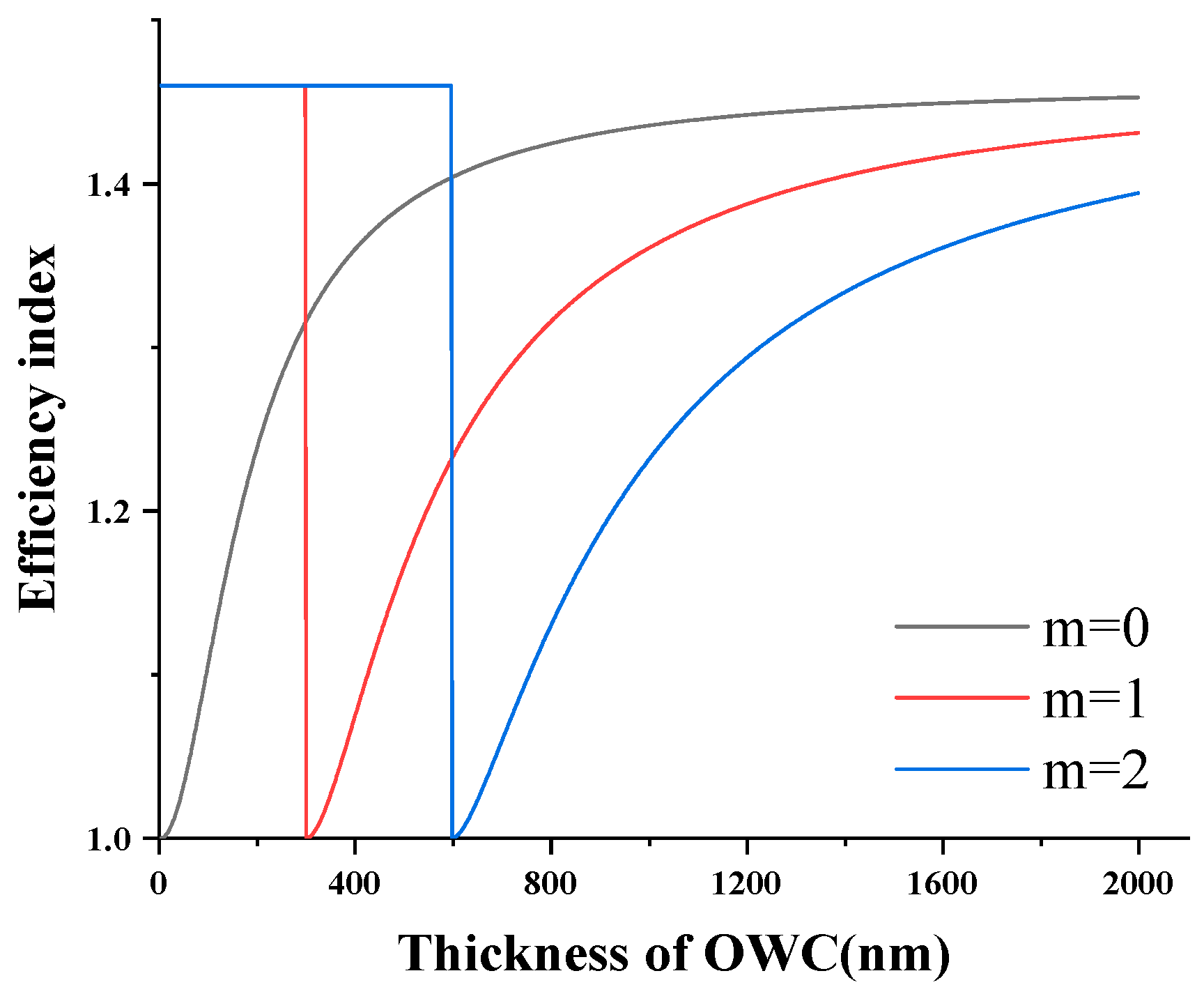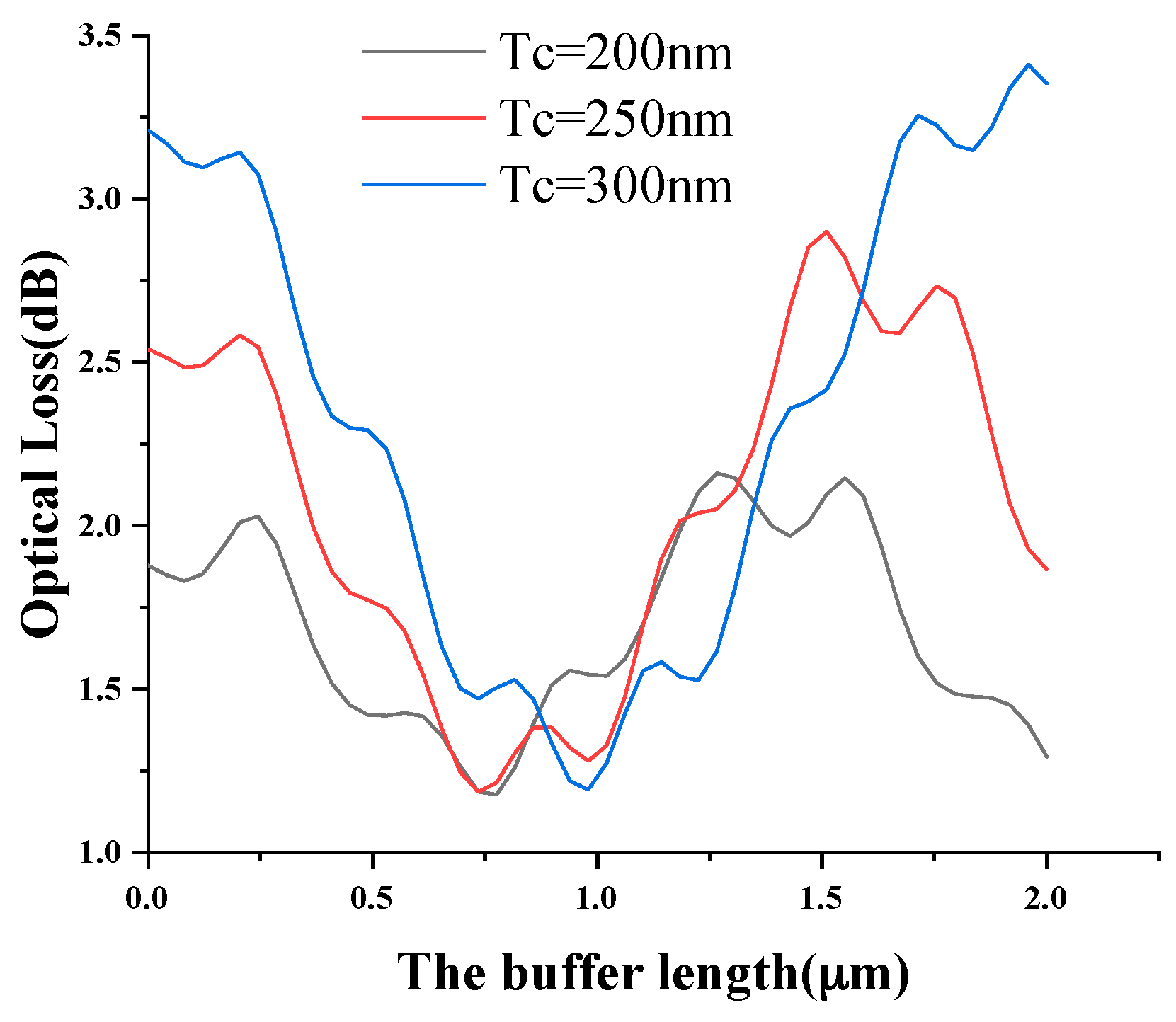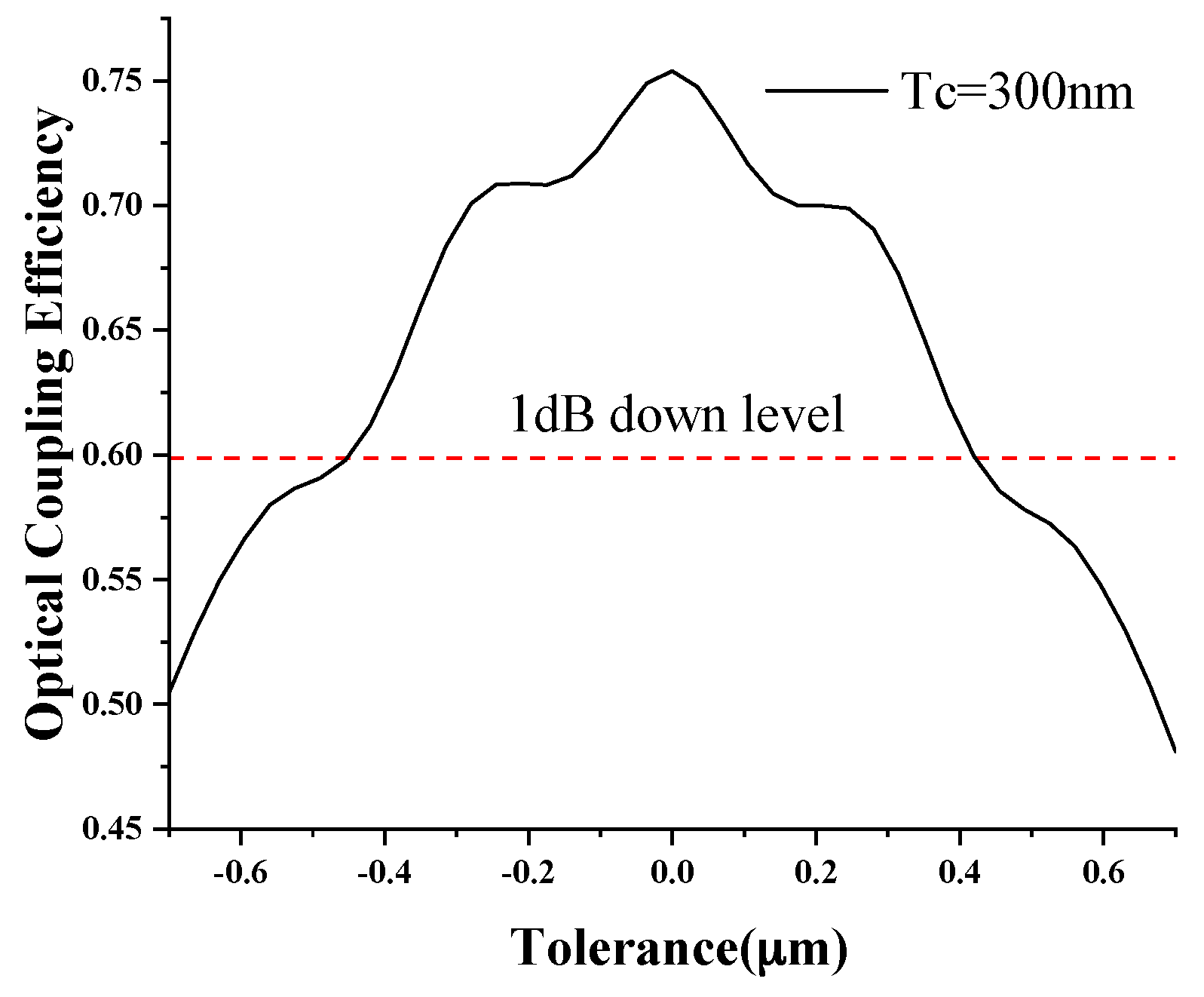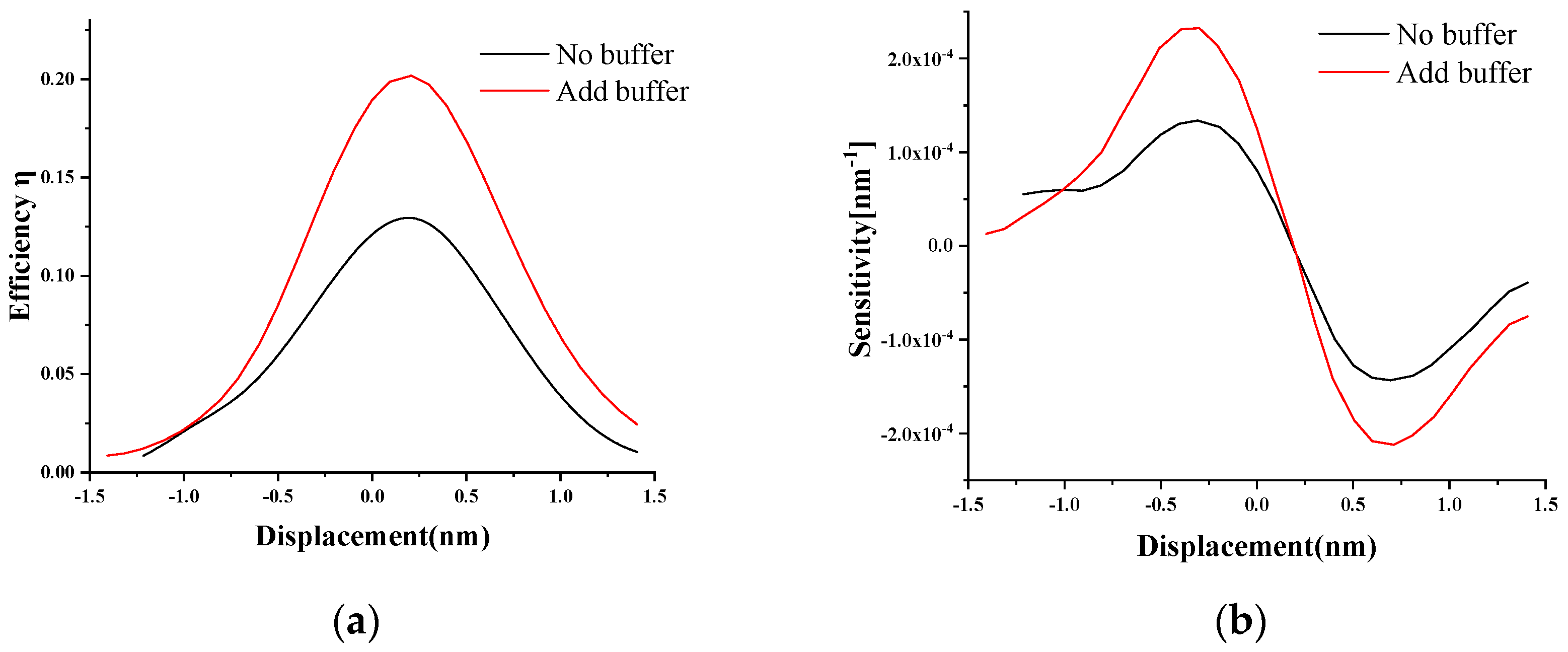Improved Optical Waveguide Microcantilever for Integrated Nanomechanical Sensor
Abstract
:1. Introduction
2. Improved Optical Waveguide Cantilever Sensor
3. Results and Discussion
4. Conclusions
Author Contributions
Funding
Conflicts of Interest
References
- Amiri, I.S.; Addanki, S. Simulation fabrication and characterization of micro-cantilever array based ozone sensor. Results Phys. 2018, 10, 923–933. [Google Scholar] [CrossRef]
- Carrascosa, L.G.; Moreno, M.; Alvarez, M.; Lechuga, L.M. Nanomechanical biosensors: A new sensing tool. TrAC Trends Anal. Chem. 2006, 25, 196–206. [Google Scholar] [CrossRef]
- Fedyanin, D.Y.; Stebunov, Y.V. All-nanophotonic NEMS biosensor on a chip. Sci. Rep. 2015, 5, 10968. [Google Scholar] [CrossRef] [PubMed] [Green Version]
- Liu, J.; Zhong, C.; Tan, J.; Wang, T.; Wilson, T. Elliptical mirror based imaging with aperture angle greater than π/2. Opt. Express 2012, 20, 19206–19213. [Google Scholar] [CrossRef] [PubMed]
- Zhang, J.W.; Cao, D.K.; Diaham, S.; Zhang, X.; Yin, X.Q.; Wang, Q. Research on potential induced degradation (PID) of polymeric backsheet in PV modules after salt-mist exposure. Solar Energy 2019, 188, 475–482. [Google Scholar] [CrossRef]
- Patil, S.B.; Al-Jehani, R.M.; Etayash, H.; Turbe, V.; Jiang, K.; Bailey, J.; Al-Akkad, W.; Soudy, R.; Kaur, K.; McKendry, R.A.; et al. Modified cantilever arrays improve sensitivity and reproducibility of nanomechanical sensing in living cells. Commun. Biol. 2018, 1, 175. [Google Scholar] [CrossRef] [PubMed] [Green Version]
- Minami, K.; Shiba, K.; Yoshikawa, G. Discrimination of structurally similar odorous molecules with various concentrations by using a nanomechanical sensor. Anal. Methods 2018, 10, 3720–3726. [Google Scholar] [CrossRef]
- Patil, S.B.; Annese, V.F.; Cumming, D.R. Commercial Aspects of Biosensors for Diagnostics and Environmental Monitoring. In Advances in Nanosensors for Biological and Environmental Analysis; Elsevier: Basel, Switzerland, 2019; pp. 133–142. [Google Scholar]
- Jiang, F.; Keating, A.; Martyniuk, M.; Pratap, R.; Faraone, L.; Dell, J. Process control of cantilever deflection for sensor application based on optical waveguides. J. Microelectromech. Syst. 2012, 22, 569–579. [Google Scholar] [CrossRef]
- Zinoviev, K.; Dominguez, C.; Plaza, J.A.; Busto, V.J.C.; Lechuga, L.M. A novel optical waveguide microcantilever sensor for the detection of nanomechanical forces. J. Lightwave Technol. 2006, 24, 2132. [Google Scholar] [CrossRef]
- Fariña, D.; Álvarez, M.; Márquez, S.; Domínguez, C.; Lechuga, L.M. Sensitivity analysis for improving nanomechanical photonic transducers biosensors. J. Phys. D: Appl. Phys. 2015, 48, 335401. [Google Scholar]
- Zinoviev, K.; Dominguez, C.; Plaza, J.A.; Lechuga, L.M. Optical waveguide cantilever actuated by light. Appl. Phys. Lett. 2008, 92, 011908. [Google Scholar] [CrossRef] [Green Version]
- Fan, G.; Li, Y.; Hu, C.; Lei, L.; Li, H. Numerical study on an optical waveguide cantilever sensor. J. Nanophotonics 2017, 11, 02600. [Google Scholar] [CrossRef]
- Nordström, M.; Zauner, D.A.; Calleja, M.; Hübner, J.; Boisen, A. Integrated optical readout for miniaturization of cantilever-based sensor system. Appl. Phys. Lett. 2007, 91, 103512. [Google Scholar] [CrossRef] [Green Version]
- Pruessner, M.W.; Siwak, N.; Amarnath, K.; Kanakaraju, S.; Chuang, W.H.; Ghodssi, R. End-coupled optical waveguide MEMS devices in the indium phosphide material system. J. Micromech. Microeng. 2006, 16, 832. [Google Scholar] [CrossRef]
- Churenkov, A. Silicon micromechanical optical waveguide for sensing and modulation. Sens. Actuators A Phy. 1996, 57, 21–27. [Google Scholar] [CrossRef]
- Fu, Y.; Ye, T.; Tang, W.; Chu, T. Efficient adiabatic silicon-on-insulator waveguide taper. Photonics Res. 2014, 2, 41–44. [Google Scholar] [CrossRef]
- Mekis, A.; Chen, J.; Kurland, I.; Fan, S.; Villeneuve, P.R.; Joannopoulos, J. High transmission through sharp bends in photonic crystal waveguides. Phys. Rev. Lett. 1996, 77, 3787. [Google Scholar] [CrossRef] [PubMed]
- Piao, X.; Yu, S.; Koo, S.; Lee, K.; Park, N. Fano-type spectral asymmetry and its control for plasmonic metal-insulator-metal stub structures. Opt. Express 2011, 19, 10907–10912. [Google Scholar] [CrossRef] [PubMed]
- Piao, X.; Yu, S.; Park, N. Control of Fano asymmetry in plasmon induced transparency and its application to plasmonic waveguide modulator. Opt. Express 2012, 20, 18994–18999. [Google Scholar] [CrossRef] [PubMed] [Green Version]
- Hunsperger, R.G. Integrated Optics; Springer: Heidelberg, Germany, 1995. [Google Scholar]
- Tenje, M. Integrated Optical Read-Out for Polymeric Cantilever-Based Sensors. Ph.D. Thesis, MIC-Department of Micro and Nanotechnology, Technical University of Denmark, Lyngby, Denmark, 2007. [Google Scholar]






© 2019 by the authors. Licensee MDPI, Basel, Switzerland. This article is an open access article distributed under the terms and conditions of the Creative Commons Attribution (CC BY) license (http://creativecommons.org/licenses/by/4.0/).
Share and Cite
Jing, Y.; Fan, G.; Wang, R.; Zhang, Z.; Cai, X.; Wei, J.; Chen, X.; Li, H.; Li, Y. Improved Optical Waveguide Microcantilever for Integrated Nanomechanical Sensor. Sensors 2019, 19, 4346. https://doi.org/10.3390/s19194346
Jing Y, Fan G, Wang R, Zhang Z, Cai X, Wei J, Chen X, Li H, Li Y. Improved Optical Waveguide Microcantilever for Integrated Nanomechanical Sensor. Sensors. 2019; 19(19):4346. https://doi.org/10.3390/s19194346
Chicago/Turabian StyleJing, Yachao, Guofang Fan, Rongwei Wang, Zeping Zhang, Xiaoyu Cai, Jiasi Wei, Xin Chen, Hongyu Li, and Yuan Li. 2019. "Improved Optical Waveguide Microcantilever for Integrated Nanomechanical Sensor" Sensors 19, no. 19: 4346. https://doi.org/10.3390/s19194346
APA StyleJing, Y., Fan, G., Wang, R., Zhang, Z., Cai, X., Wei, J., Chen, X., Li, H., & Li, Y. (2019). Improved Optical Waveguide Microcantilever for Integrated Nanomechanical Sensor. Sensors, 19(19), 4346. https://doi.org/10.3390/s19194346



